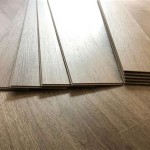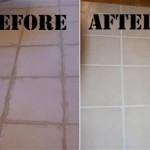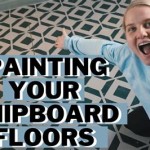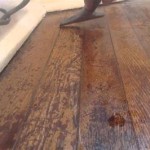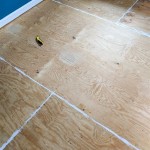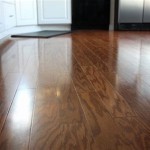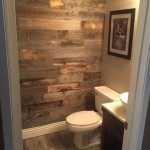How to Level Particle Board Subfloor – A Comprehensive Guide
Particle board subfloors are widely used in construction due to their affordability and ease of installation. However, over time, these subfloors can become uneven, creating a bumpy and uncomfortable surface for flooring. If you're planning to install new flooring or want to level an existing uneven subfloor, understanding how to level particle board subfloor is crucial.
Preparation
Before you begin leveling the subfloor, it's essential to prepare the surface. Start by removing any existing flooring or carpet, ensuring a clean and unobstructed work surface. Next, inspect the subfloor for any loose or damaged areas. Secure any loose boards using screws or nails and replace any severely damaged sections.
Tools and Materials
To level a particle board subfloor, you'll need the following tools and materials:
- Self-leveling compound
- Mixing bucket
- Drill with mixing paddle
- Level li>Straightedge
- Spreader
- Float trowel
- Safety glasses and gloves
Mixing Self-leveling Compound
Follow the manufacturer's instructions carefully when mixing the self-leveling compound. Typically, you'll combine the powder with water in a mixing bucket and mix using a drill with a mixing paddle until a smooth consistency is achieved.
Applying Self-leveling Compound
Start by pouring the mixed compound onto the subfloor at one corner of the room. Use a spreader to distribute the compound evenly, creating a thin layer that fills any gaps or unevenness. Use a straightedge to level the compound, removing any excess or air bubbles.
Continue applying the compound in sections, gradually working your way across the subfloor. Allow each section to level out before moving on to the next. Use a float trowel to smooth out the surface, ensuring a uniform finish.
Curing and Drying
After applying the self-leveling compound, it's critical to allow it to cure and dry properly. This process can take several hours to days, depending on the type of compound used and the thickness of the layer. Refer to the manufacturer's instructions for the specific drying time.
During the curing process, it's important to avoid walking on or disturbing the subfloor. Allow it to fully set and dry to prevent any damage or cracking.
Finishing Touches
Once the subfloor is level and dry, you can proceed with installing new flooring or refinishing the existing floor. If you're installing new flooring, refer to the manufacturer's specifications for underlayment and installation instructions.
Leveling a particle board subfloor is a straightforward process that can significantly improve the appearance and functionality of your flooring. By following the steps outlined above, you can achieve a level and smooth subfloor, ensuring a stable base for your flooring and a more comfortable living space.

How To Level The Particle Board Subfloor With Concrete Leveling Tripods

How To Level The Particle Board Subfloor With Concrete Leveling Tripods

How To Level A Plywood Or Osb Subfloor Using Asphalt Shingles Construction Felt

Flooring Replacing Particle Board Subfloor With Plywood Home Improvement Stack Exchange

How To Level A Plywood Subfloor With And Self Leveling Compound

Hardwood Floor How To Flatten The Sagging Osb Subfloor Home Improvement Stack Exchange

Self Leveling Underlayment No More Mysteries Diytileguy

Can I Use Self Leveling Compound On A Chipboard Osb Mryoucandoityourself

How To Install Hardwood Floor Over Particle Board Patchwork Pebbles

Subfloor Mid 70s Home With 3 4 Particle Board Sub Floor Need Clarification Improvement Stack Exchange
See Also
